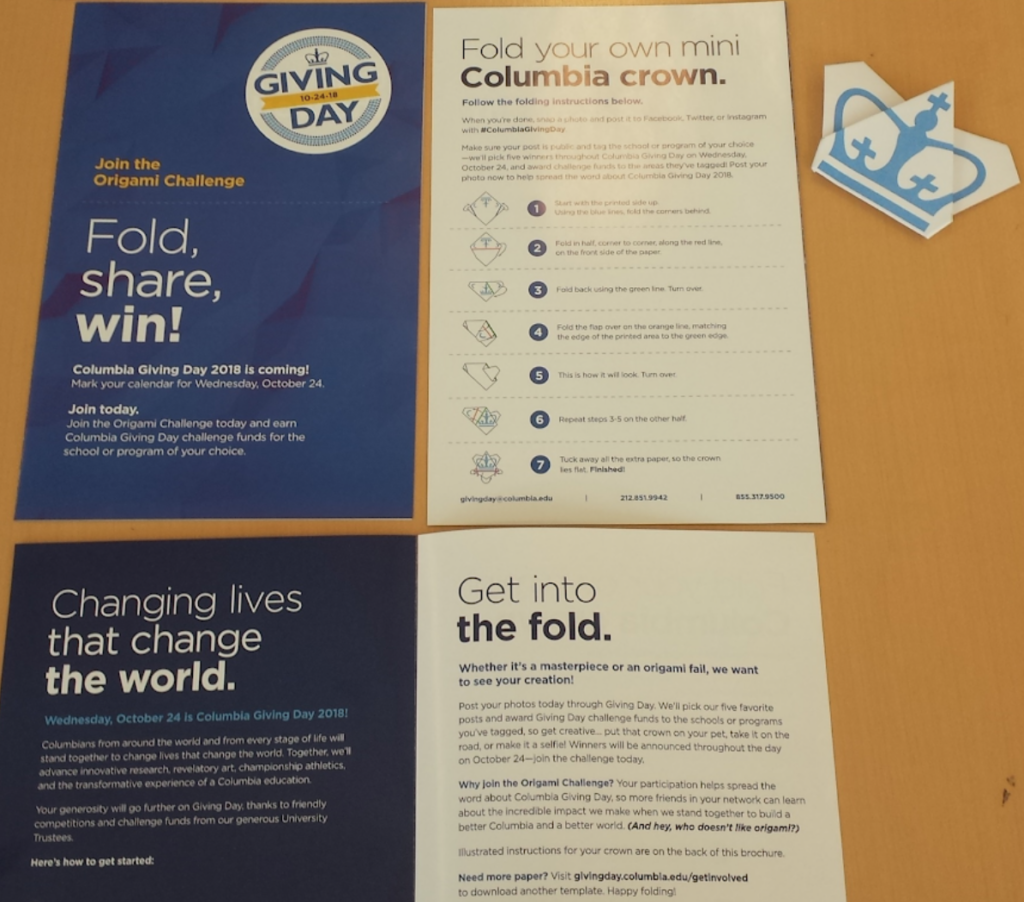Promoting a Giving Day
 These days, it’s hard to find an annual fund calendar that doesn’t include a giving day. According to AGN research, eight out of ten educational institutions have either held one in the past or are planning to launch one in the year ahead. No doubt these events have become important engagement tools for annual giving programs to get alumni and other constituents excited about giving back. In addition to generating significant donors and dollars, giving days encourage collaboration among schools, units, and departments, and help strengthen the culture of philanthropy for an institution.
These days, it’s hard to find an annual fund calendar that doesn’t include a giving day. According to AGN research, eight out of ten educational institutions have either held one in the past or are planning to launch one in the year ahead. No doubt these events have become important engagement tools for annual giving programs to get alumni and other constituents excited about giving back. In addition to generating significant donors and dollars, giving days encourage collaboration among schools, units, and departments, and help strengthen the culture of philanthropy for an institution.
For many colleges, universities, and independent schools that have integrated giving days as a recurring feature of their annual giving programs, the biggest challenge is no longer the basic elements of planning and executing a successful event. With many alumni, parents, and employees already aware of—and even expecting—an institutional day of giving, the focus has now shifted to making the event fresh and interesting for donors.
Columbia University was an early adopter of the giving day trend when it started nearly a decade ago. Now, with seven successful giving days under their belt, it has become increasingly important for the team to find ways to keep their constituents engaged and excited about the event. They’ve found that one of the best opportunities to do this is when sending out the first “save the date” communications, well before the big day.
This past year, Columbia designed a mailer with an interactive element to help create buzz and bring alumni “into the fold” for their most recent giving day. Recipients were invited to participate in a pre-giving day “Origami Challenge” on the front of the envelope. Inside, they found a template and instructions for creating an origami version of the school’s symbol, the Columbia Crown. The mailer asked for people to post their attempts at the origami crown on social media, and visit the giving day website to learn more about the different areas they could support.
When designing the piece, Columbia’s annual giving team felt that the origami crown met a number of crucial criteria. The crown only required one sheet of standard paper, which made it cost-effective to produce and distribute. It was also an activity that could be considered fun for all recipients, regardless of their age or demographic. Recipients who posted their successful (and unsuccessful!) attempts at the origami project on social media were then entered into a participation challenge, which helped promote the upcoming giving day throughout the Columbia community.
Not only did the team see an increase in social media activity this year in comparison to last year, a PDF version of the origami crown was downloaded more than 1,000 times from the giving day website. The crown was also featured at Columbia Giving Day tables on campus and at their homecoming game. Students, parents, and children all stopped by to fold their own Columbia Crowns, significantly contributing to the spirit of the event, as well as raising general awareness about the giving day. The excitement generated through the Origami Challenge helped Columbia record their most successful giving day ever, increasing their dollars raised by 29 percent and total donors by 13 percent, compared to the previous year’s results.
Hosting a giving day may no longer be cutting edge, but it is an undoubtedly effective strategy for raising funds and driving participation. To ensure that these events continue to be successful for your institution, it’s important to make them memorable. By utilizing unique engagement tactics, you can keep your giving days interesting and fresh in the minds of your donors.

AGN Members receive unlimited access to our resources, discounts, and other benefits. Click here to learn more.
Want to stay up-to-date on best practices in annual giving? Click here to follow AGN's Page on Linkedin!
